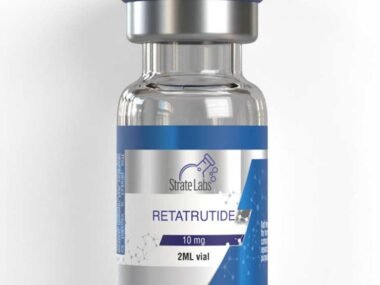Patient data breaches in healthcare make headlines pretty regularly these days. A hospital system gets hacked, thousands of medical records get exposed, and suddenly people are worried about their most private health information floating around somewhere it shouldn’t be. But here’s what most people don’t realize: there’s actually a formal audit process that healthcare organizations go through to prove they’re protecting patient information properly.
These aren’t just basic security checkups or internal reviews that companies do themselves. We’re talking about independent auditors coming in to examine every system, every process, every control that touches patient data. The whole point is to verify that healthcare providers actually have the security measures in place that they claim to have.
What This Type of Audit Actually Examines
When auditors show up at a healthcare facility, they’re not just glancing at a few passwords and calling it good. They dig into the entire infrastructure that handles patient information. That means looking at how electronic health records get stored, who can access them, how they’re transmitted between systems, and what happens when someone tries to get in who shouldn’t.
The audit covers both the technical side and the operational side. On the technical end, auditors examine things such as encryption methods, network security, access controls, and backup systems. On the operational side, they look at policies, training programs, incident response plans, and how the organization monitors for security issues on an ongoing basis.
What makes these audits different from regular IT security reviews is the focus on controls. Auditors want to see documented evidence that specific security controls exist and that they work as intended. It’s not enough to say “we encrypt patient data.” The organization needs to show exactly how encryption happens, who manages the keys, how often they rotate, and what procedures exist if something goes wrong.
Why Healthcare Organizations Can’t Skip This Step
Healthcare providers face a unique combination of regulatory requirements and business pressures that make formal audits pretty much unavoidable. HIPAA sets the baseline for patient privacy, but that’s just the starting point. Insurance companies, hospital networks, and other healthcare partners want additional verification that their data is being handled securely.
This is where specialized evaluation becomes critical. For healthcare organizations that handle sensitive patient information across multiple systems and partners, a soc audit for healthcare firms provides the independent verification that business associates and regulatory bodies increasingly demand. Without this type of formal assessment, healthcare providers often find themselves locked out of partnerships or contracts that require documented proof of security controls.
The financial consequences of skipping proper audits can be severe. Healthcare organizations that experience data breaches face average costs in the millions, and that’s before accounting for regulatory fines, legal fees, and the long-term damage to reputation. But the business impact goes beyond just breach response. Many healthcare companies discover they can’t bid on certain contracts or partnerships because they lack the audit reports that potential partners require.
The Process Healthcare Facilities Go Through
Getting audited isn’t a quick afternoon meeting. The typical audit process for a healthcare organization spans several months from start to finish. It begins with a scoping phase where the auditor and the healthcare provider agree on exactly what systems and processes will be examined. This matters because most healthcare organizations have complex IT environments with dozens of applications and databases.
Once the scope is set, the real work begins. The healthcare organization needs to gather documentation for every control that’s being tested. That means pulling together policies, procedures, system configurations, access logs, training records, and incident reports. For a mid-sized hospital or clinic network, this documentation can easily fill several filing cabinets worth of evidence.
Then comes the actual testing phase. Auditors don’t just review documents – they perform hands-on testing to verify controls work as described. They might try to access systems they shouldn’t be able to reach, examine audit logs to see if suspicious activity gets flagged, or review how the organization handles security incidents. They interview staff members to ensure people understand and follow security procedures.
The problem is that many healthcare organizations treat audits as a one-time checkbox exercise. They scramble to get ready, pass the audit, and then let things slide until the next one comes around. That approach creates gaps where security controls deteriorate between audit cycles.
What Happens When Auditors Find Problems
No healthcare organization is perfect, and auditors almost always identify some issues during their examination. The question is how significant those issues are. Minor findings might be things such as incomplete documentation or outdated policy language. Major findings could involve actual control failures where patient data isn’t being protected as it should be.
When auditors discover problems, they document them in detail. The healthcare organization then needs to create remediation plans showing how they’ll fix each issue. For serious problems, auditors might issue a qualified opinion or even refuse to complete the audit until critical issues get resolved.
This is where things get expensive. Fixing control deficiencies often requires new technology, process changes, additional staff training, or all of the above. A hospital that discovers its access controls aren’t working properly might need to implement a whole new identity management system. A clinic network with inadequate encryption might need to overhaul how data moves between locations.
The timeline for remediation varies depending on the severity of findings. Minor documentation issues might get fixed in a few weeks. Major control deficiencies could take months or even a year to fully address. During that time, the healthcare organization remains vulnerable and may struggle to satisfy business partners who want to see a clean audit report.
The Reality of Ongoing Compliance
Here’s the thing that catches healthcare organizations off guard: passing one audit doesn’t mean you’re done. Security controls need continuous monitoring and updating. Threats change, technology evolves, regulations get updated, and business operations shift. What passed an audit last year might not meet requirements this year.
Healthcare providers that take compliance seriously build security monitoring into their regular operations. They track control effectiveness, document changes to systems and processes, and address issues as they come up rather than waiting for an auditor to find them. This approach makes future audits significantly less painful because the organization isn’t scrambling to fix a year’s worth of problems in a few weeks.
The cost of ongoing compliance isn’t trivial. Healthcare organizations need dedicated staff to manage security programs, maintain documentation, and coordinate with auditors. Smaller practices sometimes struggle with these resource requirements, which is why many turn to managed security services or compliance consultants to help maintain their programs between formal audits.
What Patients Should Actually Know
Most patients have no idea whether their healthcare provider has undergone formal security audits. The information usually isn’t advertised on clinic websites or mentioned during appointments. But patients do have the right to ask how their medical information is being protected and what verification processes the provider follows.
Healthcare organizations with strong security programs and clean audit reports should be willing to discuss their approach to data protection. Those that get defensive or vague when asked about security measures might not have their house in order. While patients can’t demand to see actual audit reports (those contain sensitive security details), they can certainly ask whether independent audits happen regularly.
The takeaway here is pretty straightforward: protecting patient data in healthcare requires more than good intentions and basic security measures. It requires formal verification through independent audits that examine controls in detail, ongoing monitoring to maintain those controls, and a genuine commitment to security that extends beyond just passing the next audit. Healthcare organizations that understand this reality are the ones actually keeping patient information safe rather than just claiming they do.










